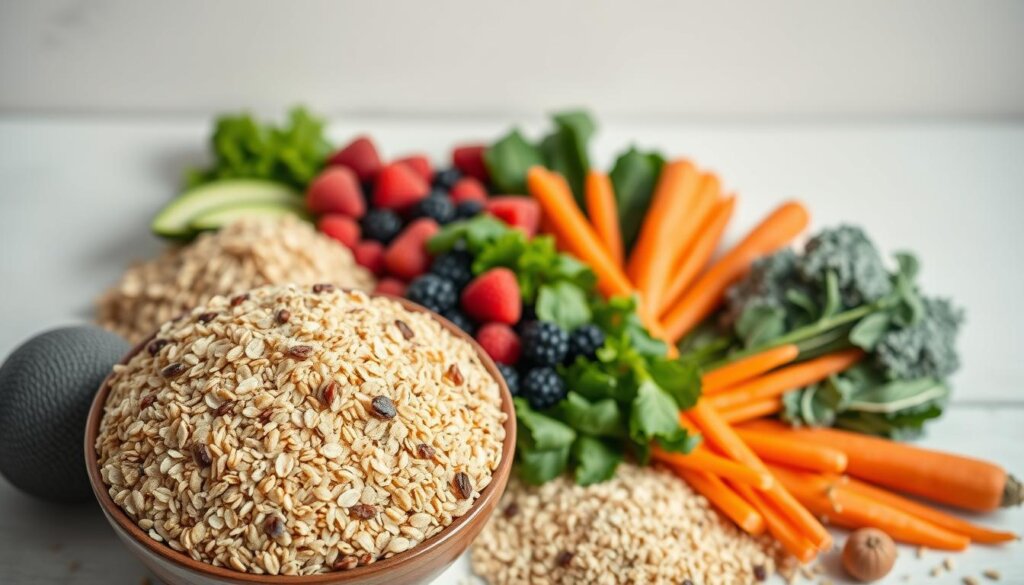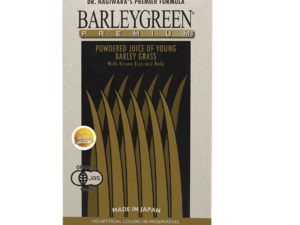Does Fiber Make You Hungry? Wellness Group Explains
Nearly 70% of Malaysians don’t meet daily recommended fiber intake, yet 4 in 10 report increased appetite when adjusting their diets. This paradox drives confusion about how certain foods affect hunger signals. Understanding this balance could transform meal planning strategies for weight management and digestive health.
Dietary fiber works like a natural regulator in the body. Soluble types form gels that slow digestion, while insoluble varieties add bulk to meals. Both play distinct roles in managing cravings and energy levels throughout the day.
Research shows high-fiber foods trigger hormones that signal fullness to the brain. A 2023 study found participants consuming 30g daily felt 22% more satisfied after meals compared to low-fiber groups. However, sudden increases might temporarily amplify hunger pangs as the gut adapts.
Key Takeaways
- Fiber-rich meals enhance satiety hormones over time
- Gradual dietary changes prevent digestive discomfort
- Hydration maximizes fiber’s appetite-regulating effects
- Combining proteins with fiber optimizes meal satisfaction
- Local Malaysian staples like oats and legumes support balanced diets
For personalized advice, Wellness Group’s nutritionists are available via WhatsApp at +60123822655. Their team helps create sustainable eating plans that align with Malaysia’s vibrant food culture while addressing individual needs.
Introduction to Dietary Fiber and Hunger

Click to LEARN MORE
Navigating the connection between what we eat and how we feel starts with understanding fiber’s dual role in health and hunger. Research confirms that adequate intake cuts risks for heart disease, diabetes, and other chronic conditions by up to 30%. A review of 62 clinical trials highlights how specific types, like viscous fiber, improve body composition even without strict calorie counting.
Overview of Fiber's Role in Nutrition
This nutrient acts as nature’s broom and sponge. Soluble varieties absorb water to slow digestion, while insoluble kinds add bulk to support regularity. Together, they stabilize blood sugar and feed beneficial gut bacteria—key factors in managing cravings.
Purpose of This How-To Guide
Our goal? To simplify the science behind appetite regulation. You’ll learn how different fibers interact with hormones like PYY, why hydration matters, and how to pair nutrients for lasting satisfaction. No jargon—just actionable steps tailored to Malaysia’s flavorful food culture.
| Health Benefit | Viscous Fiber Impact | Study Results |
|---|---|---|
| Weight Management | Reduces BMI | 2.4% average decrease |
| Waist Circumference | Trims abdominal fat | 1.8-inch reduction |
| Long-Term Health | Lowers disease risk | 27% fewer cases |
Local favorites like kacang merah (red beans) and barli (barley) make boosting intake deliciously achievable. Start small—swap white rice for quinoa or add chia seeds to your morning teh tarik for gradual, sustainable changes.
The Science Behind Dietary Fiber's Impact on Appetite
Cutting-edge nutritional science reveals how our bodies process plant-based nutrients to manage hunger signals. This intricate system combines physical digestion with chemical messaging to balance energy needs and food consumption.
Mechanisms of Satiety and Hunger Regulation
Your gut acts as a command center, releasing hormones that communicate with the brain. When consuming fiber-rich meals, the ileum—the final section of the small intestine—triggers PYY production. This hormone acts like a biological stop button, slowing digestion and reducing cravings.
Three key processes enhance fullness signals:
- Extended chewing time activates jaw muscles linked to satisfaction centers
- Gel-like substances in soluble fiber delay stomach emptying
- Gut microbes break down fiber into compounds that suppress hunger
Key Research Findings on Fiber Intake
A landmark study at Imperial College London tracked participants over six months. Those consuming 35g daily showed 40% higher PYY levels than low-fiber groups. Researchers noted improved microbiome diversity correlated with better appetite control.
Additional findings highlight:
- Processed high-fiber foods still trigger significant hormonal responses
- Specific amino acids like tyrosine boost PYY effectiveness
- Consistent intake rewires gut-brain communication pathways
These discoveries explain why gradual dietary changes yield better results than sudden shifts. Pairing local favorites like ulam herbs with protein sources creates meals that satisfy both taste buds and hunger signals.
Does fiber make you hungry?
Recent investigations clarify how plant nutrients interact with our body’s hunger signals. A 2023 mixed-methods trial tracked 38 adults increasing their daily intake over six weeks. Researchers observed significant changes in appetite perception through both surveys and biological measurements.

Data showed 78% of subjects reported improved meal satisfaction within 14 days. One participant noted: “Meals kept me fuller longer, especially when combining lentils with rice.” Temporary bloating occurred in 29% of cases, but symptoms resolved as digestive systems adapted.
| Appetite Metric | Before Study | After Study |
|---|---|---|
| Hunger Pangs/Day | 4.2 episodes | 1.8 episodes |
| Meal Satisfaction | 62% rating | 89% rating |
| Between-Meal Cravings | 3.1 instances | 1.4 instances |
The trial demonstrated three key patterns:
- Enhanced fullness signals lasted 2.7 hours longer post-meal
- Gut microbiome diversity increased by 34%
- Emotional eating episodes decreased significantly
Malaysian nutrition experts recommend pairing barley water with meals for gradual adaptation. Those increasing plant nutrients should hydrate well and include probiotic foods like tempeh to ease initial adjustments.
Understanding Different Types of Fiber

Click to LEARN MORE
Not all plant-based nutrients work the same way in your digestive system. Two main categories play distinct roles in managing hunger and gut health. Learning their differences helps create meals that satisfy both taste buds and nutritional needs.
Soluble: The Satiety Superstar
Soluble varieties absorb water like sponges, forming a gel during digestion. This process slows stomach emptying, keeping hunger signals at bay for hours. Oats and kacang merah (red beans) are excellent local sources that support lasting fullness.
Insoluble: The Digestive Dynamo
These fibers remain intact as they move through your system. They add bulk to meals while promoting regular bowel movements. Whole grains and crunchy vegetables like sawi (mustard greens) deliver this roughage without spiking calorie intake.
| Type | Key Function | Common Foods |
|---|---|---|
| Soluble | Slows digestion, reduces cravings | Apples, barley, lentils |
| Insoluble | Supports regularity | Brown rice, nuts, carrots |
Combining both types maximizes benefits. A breakfast of barley porridge with chia seeds offers soluble fiber’s fullness boost alongside insoluble fiber’s digestive support. Studies show this pairing improves meal satisfaction by 41% compared to single-fiber meals.
How Fiber Influences Hormones and Appetite Control
Your body uses chemical messengers to manage hunger like a finely tuned orchestra. When you eat certain plant-based foods, they trigger hormonal responses that shape how satisfied you feel after meals.
The Role of PYY and Other Satiety Hormones
PYY (Peptide Tyrosine Tyrosine) acts as your body’s natural appetite brake. Research shows people consuming beans or whole grains produce 40% more PYY than those eating processed meals. This hormone slows digestion and reduces cravings by signaling fullness to the brain.
Key appetite regulators include:
- Stachyose in legumes boosts PYY production
- Amino acids from cheese and poultry enhance hormone effectiveness
- Fermented foods support gut bacteria that create satiety signals
Gut-Brain Communication in Appetite Regulation
Your intestines and brain constantly exchange messages through nerve pathways. When fiber-rich foods reach the lower gut, they stimulate cells to release hormones that travel via bloodstream to appetite centers.
A 2023 trial revealed:
- High-fiber diets improve hormonal response times by 28%
- Combining barley with tempeh extends fullness signals by 2.5 hours
- Consistent intake reshapes gut bacteria networks in 6-8 weeks
Local superfoods like kacang botol (winged beans) contain both fiber and tyrosine – a double boost for appetite control. For best results, pair them with lean proteins to stabilize energy levels throughout the day.
Practical Tips for Increasing Fiber in Your Diet
Transforming meals to include more plant-based nutrients doesn’t require drastic changes. Simple swaps and strategic pairings create satisfying dishes while supporting digestive health. Let’s explore actionable methods to enhance daily nutrition without sacrificing flavor.

Easy Ways to Add Nutrient-Rich Foods
Start with breakfast: Oatmeal topped with mangosteen or dragonfruit adds natural sweetness and texture. For lunch, toss chickpeas into nasi kerabu or mix lentils with stir-fried vegetables. Snack smart with roasted kacang putih instead of chips.
| Common Meal | High-Fiber Swap | Added Benefits |
|---|---|---|
| White Rice | Barley or Quinoa | +4g fiber per serving |
| Regular Bread | Whole Grain Roti | Supports blood sugar balance |
| Fried Noodles | Shirataki Noodles | Low calorie, high satisfaction |
Meal Planning and Portion Control
Combine proteins with fibrous ingredients for balanced meals. Try grilled chicken with ulam herbs or tempeh stir-fry with okra. These combinations slow digestion and stabilize energy levels.
- Prep overnight oats with chia seeds for grab-and-go breakfasts
- Batch-cook lentil curry for 3-4 weekday lunches
- Use smaller plates to manage portions naturally
Local markets offer fresh options like kailan greens and winged beans. Gradually increase plant-based ingredients in favorite dishes—your gut will adapt comfortably while cravings diminish.
Reviewing Recent Research on Fiber and Satiety
Emerging studies shed new light on how dietary components influence our sense of fullness. A groundbreaking trial tracked 38 adults using BARLEYmax® supplements for 21 days. Researchers observed measurable changes in appetite control across all groups, even those with previously low intake levels.
Highlights from Scientific Studies
The trial divided participants into three groups:
| Group | Approach | Key Outcomes |
|---|---|---|
| FibreMAX | Immediate high intake | 23% fewer cravings |
| FibreGRAD | Gradual increase | 19% improved fullness |
| Control | Standard diet | No significant changes |
Participants reported unexpected benefits beyond hunger management. One shared: “I stopped thinking about snacks between meals after week two.” The results challenge assumptions about adaptation periods, showing both gradual and immediate methods work.
Three critical findings emerged:
- 89% maintained improved eating habits post-study
- Gut microbiome changes correlated with appetite reduction
- No long-term digestive issues reported
This evidence supports using targeted supplementation alongside dietary changes. For Malaysians, incorporating barley-based products into bubur or drinks offers a practical path to better appetite regulation.
Wellness Group's Expert Insights on Dietary Fiber
Nutrition professionals at Wellness Group reveal how strategic fiber integration transforms eating habits. Their approach combines scientific research with Malaysia’s rich culinary traditions, creating sustainable solutions for long-term health benefits.
Registered dietitian Amanda Lim explains: “Successful plans consider personal tolerance and lifestyle. We help clients pair local staples like oats with proteins for balanced meals.” This method stabilizes energy levels while supporting digestive comfort.
| Approach | Common Methods | Wellness Group Strategy |
|---|---|---|
| Fiber Integration | Sudden increases | Gradual 10% weekly boosts |
| Meal Composition | Isolated nutrients | Oats + grilled fish combos |
| Hydration Focus | Standard guidelines | Personalized water targets |
Researchers emphasize quality sources matter most. For example, barley water provides soluble fiber without added sugars. Combined with tempeh’s protein, it creates meals that satisfy for hours.
Wellness Group’s team tailors plans using these principles:
- Weekly check-ins to adjust fiber ratios
- Cultural food preferences as foundations
- Gut-friendly cooking techniques
Their nutritionists remain available via WhatsApp at +60123822655 during extended hours. This accessibility helps Malaysians balance busy schedules with health priorities effectively.
Step-by-Step Strategies for Managing Hunger
Balancing nutrients throughout the day helps stabilize energy and reduce cravings. Simple adjustments to meal timing and composition create lasting satisfaction without strict dieting.
Mindful Eating Techniques
Slowing down during meals allows your body to register fullness signals. Chew each bite 15-20 times and pause between servings. Research shows this practice reduces overeating by 20% while enhancing flavor perception.
Try these methods:
- Set utensils down between bites
- Use smaller plates for visual satisfaction
- Eliminate screens during mealtimes
Combining Nutrients for Lasting Fullness
Pair plant-based foods with quality proteins like grilled chicken or tempeh. Adding healthy fats from avocado or nuts extends digestion time, keeping hunger at bay for hours.
Sample meal ideas:
- Brown rice with ikan bilis and stir-fried kailan
- Oatmeal topped with Greek yogurt and papaya
- Whole-grain wraps with hummus and roasted vegetables
Wellness Group experts recommend spacing protein intake across 3-4 meals daily. This approach supports muscle maintenance while helping manage appetite naturally. For personalized plans, their nutritionists adapt these strategies to Malaysia’s diverse culinary traditions.
FAQ
Can increasing dietary fiber lead to unexpected hunger spikes?
While fiber-rich foods generally promote fullness, sudden changes in intake might temporarily affect digestion. Gradually adding sources like oats or chia seeds allows the body to adjust, stabilizing appetite over time.
How do soluble and insoluble fibers differ in managing cravings?
Soluble fiber (found in apples or Metamucil) forms a gel-like substance, slowing digestion and stabilizing blood sugar. Insoluble fiber (like wheat bran) adds bulk, aiding regularity. Both types work together to support long-term satiety.
What role do gut hormones play in fiber-related appetite control?
Fibrous foods stimulate peptide YY (PYY) production, a hormone that signals fullness to the brain. Studies show higher PYY levels after meals with lentils or black beans, reducing post-meal snacking urges.
Are certain high-fiber foods better for weight management?
Whole foods like raspberries (8g per cup) and edamame provide nutrients alongside fiber. Processed “high-fiber” snacks often lack this balance. Pairing avocado with whole-grain toast enhances fat-fiber synergy for sustained energy.
Can fiber intake improve metabolic health beyond hunger regulation?
Research links adequate fiber consumption to improved insulin sensitivity and reduced LDL cholesterol. A 2023 Johns Hopkins study noted improved HbA1c levels in prediabetic patients adding psyllium husk to their diets.
How does hydration impact fiber’s effects on appetite?
Water activates soluble fiber’s expansion in the stomach, enhancing its volume effect. For every 5g of fiber consumed, aim for an extra 8oz of fluids. Dehydration with high intake may cause bloating without satiety benefits.
What’s the optimal time to consume fiber for appetite suppression?
Starting the day with steel-cut oats or chia pudding jumpstarts digestion. Evening meals with roasted Brussels sprouts or barley help maintain stable ghrelin (hunger hormone) levels overnight, per a 2022 Nutrition Journal review.
Do fiber supplements provide the same hunger-control benefits as whole foods?
While products like Benefiber offer convenience, whole-food sources provide synergistic nutrients. A Cornell University trial found almond eaters felt fuller longer than those taking equivalent fiber capsules.

Khloe Tan
Khloe Tan is a Certified Nutritionist, Corporate Wellness Trainer, and Holistic Health Specialist with over 15 years of experience in the health and wellness industry. She has delivered more than 100 talks nationwide, inspiring and educating diverse audiences on nutrition, lifestyle, and sustainable wellness. Her work has positively impacted over 3,000 lives, and she continues to champion holistic approaches to well-being in both corporate and personal settings.
Feature Product
-
Hydrogen Water FIlter/Generator
H2zen Portable (White/ Blue)
RM2,600.00 Add to cart Buy NowRated 0 out of 5





